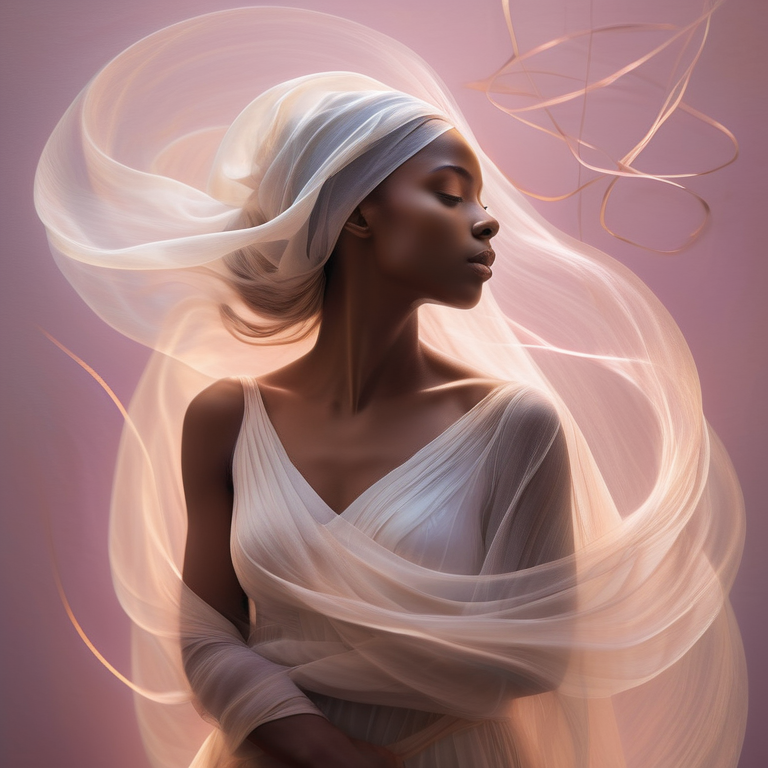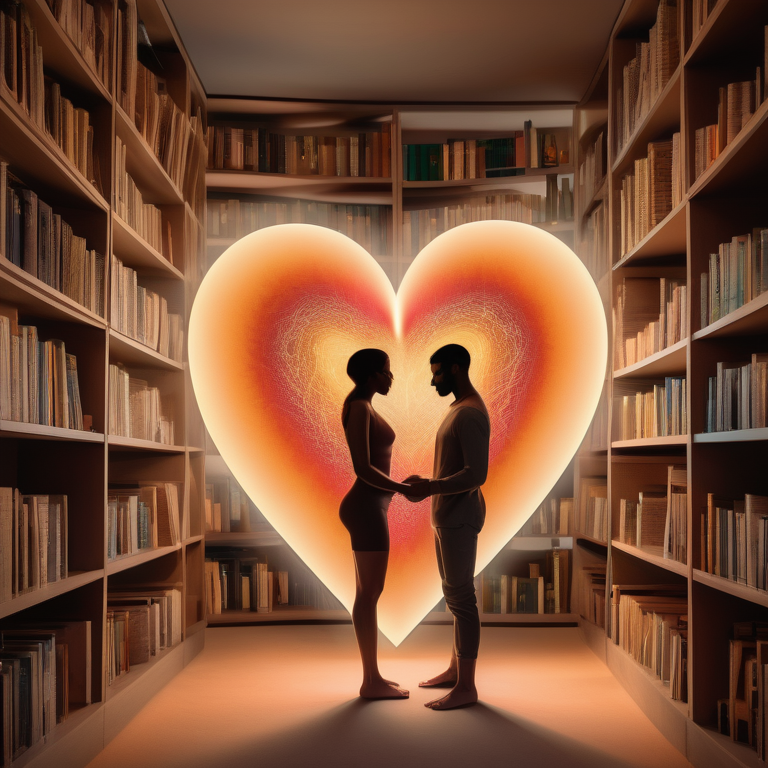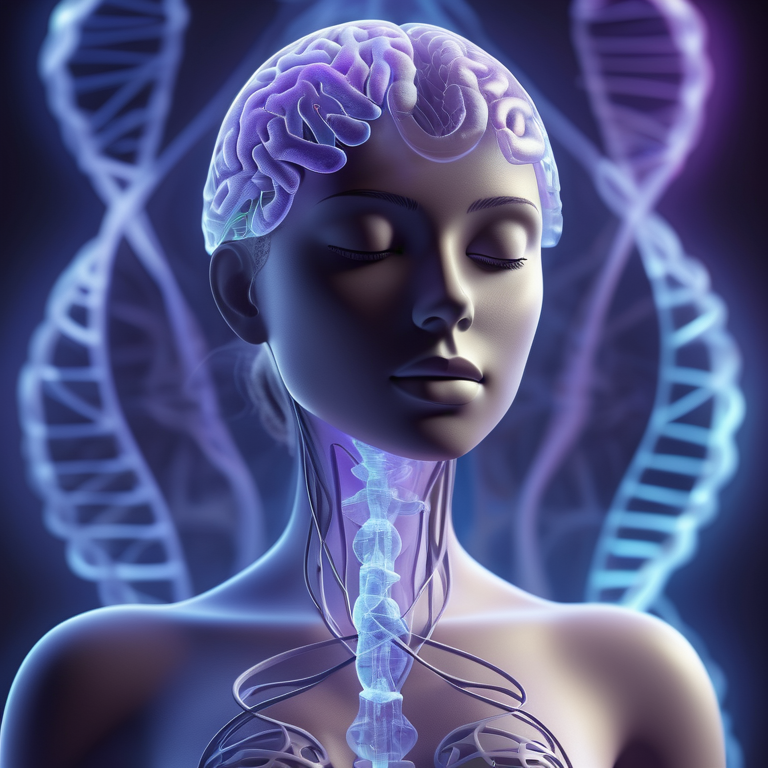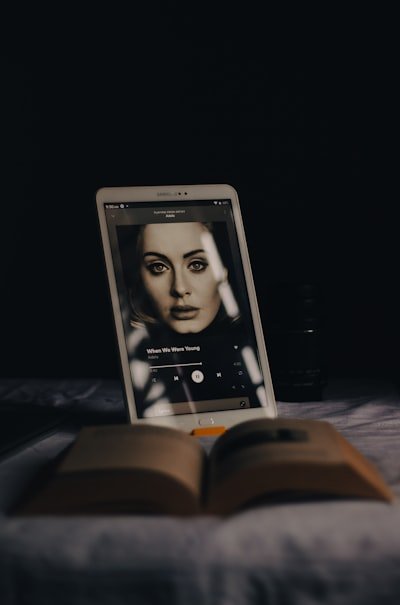Embracing Female Sexuality in Poetry: A Deep Dive

Key Highlights
- Female sexuality in poetry has evolved throughout history, with ancient poets like Sappho and Renaissance poets exploring love and desire between women.
- Female poets like Emily Dickinson and Sylvia Plath have made significant contributions to the exploration of female sexuality in their works.
- Iconic poems like “Daddy” by Sylvia Plath and “Still I Rise” by Maya Angelou delve into complex relationships and empowerment.
- Themes of body, power, autonomy, desire, and resistance are common in poems about female sexuality.
- Feminism has played a crucial role in shaping poetry about female sexuality, breaking silences and expanding narratives.
- The intersection of culture and female sexuality in poetry often challenges cultural taboos and explores intersectionality.
- Digital media has provided new platforms for the expression of female sexuality in poetry, through online platforms and spoken word performances.
Introduction
Female sexuality has always been a source of fascination and inspiration in literature and art, and poetry is no exception. Throughout history, poets have explored and celebrated the many facets of female sexuality in poetry, from ancient times to the present day. Female poets, in particular, have played a crucial role in breaking down barriers and exploring the complexities of female desire, love, and empowerment through their words. In this blog, we will take a deep dive into the evolution of female sexuality in poetry, the key figures who have shaped this exploration, iconic poems that have become cultural touchstones, the themes and imagery used to convey female sexuality, the role of feminism in shaping poetry, the intersection of culture and female sexuality in poetry, and the impact of digital media on this art form. Join us as we explore the rich and diverse world of female sexuality in poetry.
The Evolution of Female Sexuality in Poetry
Throughout history, the exploration of female sexuality in poetry has evolved and transformed, reflecting the changing social and cultural attitudes towards women. From ancient poets like Sappho who celebrated love and desire between women to the Renaissance poets who embraced the beauty of the female form, the depiction of female sexuality in poetry has varied across different time periods. The Enlightenment and Romanticism brought a shift in perspectives, with poets exploring the complexities of love, womanhood, and the female experience. This evolution continues to shape how female sexuality is portrayed and celebrated in poetry today.
Tracing the origins: Ancient to Renaissance poetry
The origins of female sexuality in poetry can be traced back to ancient times, with poets like Sappho of Lesbos. Sappho’s lyrical poetry, often referred to as odes or verses, depicted love and desire between women in a way that was both sensual and intimate. Her words celebrated the beauty of the female form and the complexities of female desire. In the Renaissance period, poets like Christina Rossetti and Elizabeth Barrett Browning continued to explore themes of love, desire, and womanhood in their works. Their poetry challenged societal norms and celebrated female sexuality in a time when such expressions were often frowned upon. These early poets laid the foundation for the exploration of female sexuality in poetry that continues to this day.
Enlightenment and Romanticism: A shift in perspectives
The Enlightenment and Romanticism brought about a shift in perspectives when it came to the portrayal of female sexuality in poetry. Poets of this era began to explore the complexities of love, desire, and womanhood in a more nuanced way. Love poems became a popular form of expression, allowing poets to delve into the depths of their own desires and explore the intricacies of romantic relationships. Female poets like Edna St. Vincent Millay and Carol Ann Duffy emerged during this time, challenging societal expectations and using their words to celebrate female sexuality. Their poetry often tackled themes of empowerment, agency, and the complexities of desire, paving the way for future generations of poets to explore and celebrate female sexuality in their own unique ways.
Key Figures in Female Sexuality and Poetry
Throughout history, there have been several key figures who have shaped the exploration of female sexuality in poetry. One such figure is Emily Dickinson, whose nuanced and introspective poems delved into themes of love, desire, and the complexities of the female experience. Another influential figure is Sappho, an ancient Greek poet known for her lyrical expression of love between women. These women poets have left a lasting impact on the world of poetry, challenging societal norms and providing a platform for the exploration of female sexuality through their powerful words.
Sappho and the legacy of lyrical expression
Sappho, an ancient Greek poet from the island of Lesbos, has left a lasting legacy in the world of poetry with her lyrical expressions of love and desire between women. Her poems, often referred to as odes or verses, celebrated the beauty of the female form and the complexities of female desire in a way that was both sensual and intimate. Sappho’s words continue to resonate with readers today, challenging traditional notions of love and sexuality. She paved the way for future generations of poets to explore and celebrate female sexuality through their own lyrical expressions, leaving a lasting impact on the poetic landscape.
Emily Dickinson’s nuanced explorations
Emily Dickinson, a renowned American poet of the 19th century, is known for her introspective and nuanced explorations of the female experience, including themes of love, desire, and sexuality. Her poems often delve into the complexities of human emotions and desires, and she was unafraid to challenge societal norms and expectations. Dickinson’s poems are characterized by their introspective and personal nature, often reflecting her own needs and desires. Through her unique and powerful voice, Dickinson opened up new possibilities for the exploration of female sexuality in poetry and continues to inspire and resonate with readers to this day.
Analyzing Iconic Poems
Several iconic poems have become cultural touchstones when it comes to the exploration of female sexuality. Poems like “Daddy” by Sylvia Plath and “Still I Rise” by Maya Angelou have captivated audiences with their powerful words and themes of empowerment, sexuality, and resilience. These poems delve into the complexities of relationships, the challenges faced by women, and the celebration of female strength and resilience. Through their powerful and evocative language, these poems have become famous for their portrayal of female sexuality and continue to inspire readers and poets alike.
“Daddy” by Sylvia Plath: A complex relationship
Sylvia Plath’s poem “Daddy” is a deeply complex exploration of the relationship between a daughter and her father. The poem delves into themes of power dynamics, love, and the struggle for independence. Plath uses powerful and evocative imagery to convey her emotions, drawing upon personal experiences and emotions. Through her words, Plath challenges traditional notions of femininity and the role of women in society, while also exploring the complexities of her own relationships with male counterparts. “Daddy” is a prime example of how poetry can delve into the depths of human emotions and the complexities of relationships, including those shaped by female sexuality.
“Still I Rise” by Maya Angelou: Empowerment and sexuality
Maya Angelou’s poem “Still I Rise” is a powerful anthem of empowerment and resilience. Through her words, Angelou celebrates the strength and resilience of women, particularly women of color, in the face of adversity. The poem explores themes of overcoming oppression, embracing one’s own power, and rising above societal expectations. Angelou’s words resonate with readers, inspiring them to embrace their own worth and celebrate their own sexuality. “Still I Rise” is a testament to the power of poetry to empower and uplift, providing a voice for those who have been silenced and marginalized. It stands as a powerful reminder of the strength and resilience of the female spirit.
Themes and Imagery in Poems about Female Sexuality
Female sexuality in poetry often explores a range of themes and make use of vivid imagery to convey the complexities of desire, power, autonomy, and resistance. The body is often portrayed as a site of power and autonomy, with poets using imagery to celebrate the beauty and strength of the female form. Desires and passions are explored, often challenging societal norms and expectations. Resistance to patriarchal forces and societal constraints is also a common theme, with poets reclaiming their voices and asserting their agency. Through these themes and imagery, poems about female sexuality provide a platform for the exploration and celebration of women’s desires and experiences.
The body as a site of power and autonomy
In poems about female sexuality, the body is often portrayed as a site of power and autonomy. Poets use vivid and evocative imagery to celebrate the beauty and strength of the female form, challenging societal notions of beauty and desirability. The female body becomes a symbol of agency and empowerment, a vessel through which desires and passions are expressed. By highlighting the power and autonomy of the female body, these poems challenge traditional patriarchal structures and provide a space for women to assert their own desires and experiences. Through their words, poets reclaim their bodies and celebrate the unique power they hold.
Love, desire, and resistance: Navigating societal norms
Love, desire, and resistance are common themes explored in poems about female sexuality. Poets delve into the complexities of romantic relationships, exploring the depths of love and desire. These poems often challenge societal norms and expectations, questioning traditional notions of love and relationships. Female poets navigate societal constraints and expectations, asserting their own desires and reclaiming their voices. Through their words, they resist the oppressive forces that seek to silence and confine them. Love, desire, and resistance become powerful tools for women to assert their own agency and celebrate their sexuality, offering a platform for genuine expression and empowerment.
The Role of Feminism in Shaping Poetry
Feminism has played a pivotal role in shaping poetry and providing a platform for the exploration of female sexuality. The feminist poetry movement emerged as a response to the underrepresentation of women’s voices in the literary canon. Female poets began to challenge societal norms and expectations, using their words to celebrate womanhood and reclaim their own narratives. Feminist poets explore a range of themes, including female desire, power, autonomy, and resistance. Through their poetry, they challenge traditional patriarchal structures and provide a space for the celebration of women’s experiences and desires.
The feminist poetry movement: Breaking silences
The feminist poetry movement emerged as a powerful force in literature, breaking silences and providing a platform for the exploration of female sexuality. Female poets began to challenge traditional patriarchal structures and societal norms, using their words to reclaim their own narratives and celebrate the complexities of womanhood. Through their poetry, they shed light on issues such as gender inequality, sexual violence, and the complexities of desire. The feminist poetry movement has paved the way for the celebration and empowerment of women’s voices, challenging the status quo and providing a space for the authentic expression of female sexuality.
Contemporary voices and the expansion of narratives
Contemporary poetry has seen an expansion of narratives surrounding female sexuality, with a diverse range of voices taking center stage. Poets from different backgrounds and perspectives have brought new dimensions to the exploration of female desire, love, and empowerment. These contemporary voices challenge traditional notions and expand the narratives surrounding female sexuality, offering fresh perspectives and insights. Through their poetry, they celebrate the diversity of female experiences and desires, providing a more inclusive and representative portrayal of female sexuality. Contemporary poetry continues to push boundaries and break new ground in the exploration of female sexuality, ensuring that the conversation remains dynamic and ever-evolving.
The Intersection of Culture and Female Sexuality in Poetry
The intersection of culture and female sexuality in poetry provides a rich and complex landscape for exploration. Poets often challenge cultural taboos and expectations, using their words to celebrate and navigate the complexities of female desire within different cultural contexts. The exploration of intersectionality, where multiple aspects of identity intersect, adds another layer of depth and nuance to the portrayal of female sexuality in poetry. By acknowledging the influence of culture and addressing the intersections of identity, poets create a space for diverse voices and experiences, ensuring that the exploration of female sexuality remains inclusive and representative.
Cultural taboos and poetic expression
Cultural taboos surrounding female sexuality often pose challenges for poets seeking to express their desires and experiences. Poets navigate societal expectations, challenging cultural norms and taboos through their words. Through poetry, they create a space for the exploration and celebration of female desire, breaking free from the constraints imposed by cultural taboos. Poetic expression becomes a powerful tool for reclaiming agency and challenging oppressive structures. By addressing cultural taboos head-on, poets provide a platform for the authentic and nuanced exploration of female sexuality, ensuring that diverse voices and experiences are represented.
Diverse voices: Intersectionality in modern poetry
Modern poetry embraces diverse voices and acknowledges the intersections of identity when it comes to the exploration of female sexuality. Poets from different backgrounds and experiences offer unique perspectives on desire, love, and empowerment, taking into account the complexities of intersectionality. By recognizing the ways in which race, ethnicity, sexuality, and other aspects of identity intersect, poets ensure that the portrayal of female sexuality in poetry is inclusive and representative. Intersectionality allows for a more nuanced and authentic exploration of female desire, showcasing the diversity of experiences and challenging the notion of a singular female narrative.
Impact of Digital Media on Poetry about Female Sexuality
The rise of digital media has had a significant impact on the exploration of female sexuality in poetry. Online platforms have provided poets with new avenues to share their work and connect with audiences on a global scale. Poets can now reach a wider audience through social media platforms like Instagram, where they can share their words and engage with readers directly. Spoken word performances have also gained popularity, allowing poets to bring their words to life in front of audiences. Digital media has democratized the world of poetry, providing a space for the authentic expression of female sexuality and empowering poets to share their voices.
Online platforms as spaces for expression and activism
Online platforms, particularly social media platforms like Instagram, have become spaces for poets to express their sexuality and engage in activism. Poets can share their work directly with a global audience, providing a platform for the exploration of female desire, love, and empowerment. Through hashtags and online communities, poets can connect with like-minded individuals and engage in discussions about female sexuality. Online platforms have also become spaces for activism, with poets using their words to challenge societal norms and fight for gender equality. These platforms have democratized poetry, allowing poets to reach a wider audience and amplify their voices, making a significant impact on the portrayal of female sexuality in the digital age.
The rise of spoken word and performance poetry
Spoken word and performance poetry have become increasingly popular forms of expression for poets exploring female sexuality. These dynamic and engaging forms allow poets to bring their words to life, infusing their performances with emotion and energy. Spoken word poetry creates a powerful connection between the poet and the audience, allowing for a more visceral and immediate experience of the words. Performance poetry creates a sense of intimacy and authenticity, bringing the exploration of female desire, love, and empowerment to life on stage. The rise of spoken word and performance poetry has added a new dimension to the exploration of female sexuality, providing a platform for poets to share their voices and connect with audiences in a meaningful way.
Conclusion
Exploring the evolution of female sexuality in poetry unveils a rich tapestry of voices and perspectives. From ancient musings to modern expressions, poets like Sappho, Emily Dickinson, Sylvia Plath, and Maya Angelou have beautifully captured the complexities of femininity and desire. Themes of power, autonomy, and resistance resonate through their verses, challenging societal norms and celebrating empowerment. Feminist movements have broken silences, paving the way for diverse narratives and intersectionality in poetry. In the digital age, online platforms and spoken word performances continue to amplify these voices, creating spaces for expression and activism. Share your thoughts and reflections in the comments below as we celebrate the profound impact of female sexuality on the poetic landscape.
Frequently Asked Questions
How has female sexuality in poetry evolved over time?
Female sexuality in poetry has evolved over time, reflecting the changing social and cultural attitudes towards women. Ancient poets like Sappho celebrated love and desire between women, while modern poets explore a diverse range of experiences and perspectives. The exploration of female sexuality in poetry has become more inclusive and representative, embracing intersectionality and challenging cultural taboos.
What are some common themes surrounding female sexuality in poetry?
Common themes surrounding female sexuality in poetry include love, lust, power, autonomy, desire, and resistance. Poets often use vivid imagery to convey the complexities of female desire and explore the societal expectations and taboos surrounding female sexuality. These themes provide a platform for the celebration and exploration of women’s desires and experiences.
How has the portrayal of female sexuality in poetry evolved over time?
The portrayal of female sexuality in poetry has evolved over time, reflecting changing societal attitudes and cultural shifts. Ancient poems celebrated love and desire between women, while modern poetry embraces diverse voices, challenges taboos, and explores the complexities of female desire and empowerment. The portrayal of female sexuality in poetry has become more varied, inclusive, and representative.
Are there any notable female poets known for their exploration of sexuality in their work?
There are several notable female poets known for their exploration of sexuality in their work. Poets like Sappho, Emily Dickinson, Sylvia Plath, and Maya Angelou have made significant contributions to the portrayal of female sexuality in poetry. Their words have challenged societal norms and provided a platform for the celebration and exploration of female desire, love, and empowerment.
How can poetry be used as a tool for empowering female sexuality?
Poetry can be a powerful tool for empowering female sexuality by providing a platform for self-expression, challenging societal norms, and celebrating the complexities of desire, love, and empowerment. Through their words, poets can reclaim agency, challenge oppressive structures, and create a space for the authentic portrayal of female sexuality.





